usmarine_0369
Reefing newb
Marine Reefers;
Here is my first aquarium, I have only been in the hobby about a 3 years. I took some short cuts at first and had no penitents, rushed everything and quickly learned that it was costing me more money than the hobby really should. Lesson learned…lol So, I broke the tank down and started all over after some serious reading over the summer and I have been successful. My tank is thriving on it’s on with all kinds of critters at night, mystery critters coming out from the woodwork that I did not put there. I am finally enjoying and wanting to go bigger and do more. I welcome the advice from your experiences and look forward to seeing your builds and inspirations.Equipment:
Tank Description:
65 Gallon Tall Oak with matching stand and canopy, tank measurements are (36”x18”x25”).
(1) 20lbs CaribSea Arag-Alive Indio-Pacific Black
Product Description: Beautiful marine substrate packed with millions of heterotrophic, autotrophic, and chemolithotrophic bacteria. Huge beneficial bacteria population aids in waste reduction and dramatically reduces cycling time in new setups. Use alone or to kick-start existing substrate bed. Arag-Alive is specially egineered to supress "new tank syndrome" and compress the ammonia cycle. It's like having a nitrite and nitrate filter, ammonia reducer, and a high-capacity biological filter for your marine aquarium. Includes Bio-Magnet clarifier to clear water fast and enhance biological efficiency. Arag-Alive marine substrates contain aragonite, a source of calcium, carbonate, and beneficial trace elements to, naturally maintain proper pH without the constant addition of chemicals.
Contains more surface area for bacterial adhesion: approximately 20,000 square inches per cubic inch for unsurpassed performance in reducing nitrate, nitrite, and ammonia. Never needs to be replaced and works with natural bacteria to enhance performance over the full life of your aquarium.
Lowest in phosphate and does not contain tar, harmful organics, silica, or other impurities. Used by the foremost public aquariums, research and government institutions, and professionals worldwide.
(1) 20lbs Ocean Direct Caribbean Live Sand
Product Description: Ocean Direct Caribbean Live Sand is real Caribbean live aragonite sand with living bacteria to help establish marine aquariums faster and safer. Ocean Direct Live Sand contains millions of living bacteria per pound, buffers for the life of the system, discourages growth of nuisance algae and aids in the growth of living corals. Ocean Direct is only offered in an un-graded natural size. This means that the product will include larger particles, for natural burrowing, in addition to the predominantly sugar sized oolithic sand.
Lighting:
Deep Blue Professional Solarmax H.O. T5 Double Lamp Light System w/ Moonlight LEDs, 10000K + Actinic 36 Inch
Product Description: Deep Blue SolarMaxHO - Double Lamp Fluorescent T5HO Light System w/Moonlight LED's. 36" Double T5 High Output Light System - 39W x 2. Elegant & Sleek: Crafted from pure aluminum for thermal conductivity. The SolarMaxHO light system makes a bold statement with its sleek & compact design. Finished with an easy to clean matte black protective coating. Power & Freedom: Incorporates state of the art electronic ballast technology to run cooler & last longer. Independently controlled lamp channels is supplied clean stable power for optimal performance. Controls easily accessible on back of unit. Multi-Moonlight LED's are preprogrammed to an always on state. Amplify & Focus: Strategically positioned moonlight LED's are specially tuned & integrated directly into the reflector simulating natural night illumination for a full day/night cycle. The main reflector adopts a light amplifying parabolic design polished to a mirror like finish. As a result, lumen output is magnified exponentially increasing both light penetration & coverage. Plug & Play: Ready to use out of the box. Includes acrylic lens cover for moisture and debris protection. Extendable mounting legs also included. Safe & Secure: Compression-fit, water resistant lamp sockets safely lock lamp pins & electrical connections away from moisture maintaining safe, reliable, high performing operation. Includes:. (1) 10,000K Daylight Lamp. (1) Actinic-03 Lamp. (6) Blue Moonlight LED's
Power Heads:
(2) Hydor Koralia Nano Power Heads 240gph
Product Description: 12V Low Voltage Controllable Pump takes aquarium water circulation to the next level. Based on the ever-popular design of the original Koralia series, this professional grade pump features: Hydor's patented magnetic support system for safe and convenient mounting, pivoting ball-joint enabling precise directional positioning, optional concentrator attachment allowing for direct flow pattern, and propeller design rotor producing exceptional performance with optimal flow rates; all with the increased safety and economical efficiency of a low voltage unit. This high-tech and energy efficient pump is fully controllable using the Hydor Koralia Wavemaker System and includes rubber cords and waterproof connector. While this unit is ideal for any aquarium setup, it was specifically designed for the current and circulation requirements of the more complex saltwater and reef aquarium systems. Flow rate adjustable between 100-260GPH.
(1) Marineland Maxi Jet 400 Power Head mode 110gph
Product Description: The Maxi-Jet Pro is a multi-use, 3-in-1 pump. It is completely adaptable to meet different needs of internal and external functions as a power head, circulation pump or utility pump. This submersible pump is ideal for powering undergravel filters, protein skimmers, calcium reactors and refugiums, as well as creating water movement.
Features and Benefits of the Maxi Jet Pro include:
· Venturi – Silent, fully adjustable aeration.
· Rotational Output – Directs water flow to needed areas of the tank.
· Impeller – Maximizes water flow.
· Adaptable Intake – Allows the power head to be used with undergravel filters.
· Omni-Directional Mount – Adjusts the pump to fit the proper current needs inside the tank.
· Propeller –Maximizes the water flow.
· Propeller Cage – Protects the propeller and tank inhabitants while minimizing flow restriction.
Heater:
ViaAqua 300-Watt Quartz Glass Submersible Heater with Built-In Thermostat rated up to 75 gallon tanks.
Filtration:
40lbs of live rock from various places; (3) Fiji branch rock, (3) Fiji premium rock, (3)Tonga deep water live rock, (3)premium Caribbean rock, (1) piece of flat coral
(1) Marineland 350B Penguin Bio-Wheel Hang-on-Back Power Filter
Product Description: Certified flow rate of 350GPH, perfect for all aquariums up to 70-gallon, uses two Rite-Size C" filter cartridges", three-stage mechanical, chemical and biological aquarium filtration. Convenient Penguin Rite-Size Filter Cartridges come ready to use with each filter...ready to mechanically and chemically remove waste, discoloration and odors. Each contains new faster-acting Black Diamond Premium Activated Carbon for maximum efficiency. Biological filtration is provided by the revolutionary and patented BIO-Wheel - proven best at removing toxic ammonia and nitrite. All BIO-Wheel filters feature Noise-Reducing Two-Piece Vented Covers, and Adjustable Mid-Level Intake Strainers.
(1) Marineland 150C Penguin Bio-Wheel Hang-on-Back Power Filter
Product Description: Certified flow rate of 150GPH, perfect for all aquariums up to 30-gallon, uses the Rite-Size B" filter cartridge"
(1) Protien Skimmer: hang-on tank mount
Product Description: Coralife Super Protein Skimmer- The Super Skimmer is a high performance foam fractionator designed with a patented needle-wheel impeller, combined with an aspirating venturi. This mixture allows the needle wheel to divide the fine bubbles into a dense froth which is injected into the reaction chamber. The deposited air bubbles and water mix together in a spiraling vortex inside the reaction chamber to increase both contact time and efficiency. As the bubbles rise, their surface areas attract and collect fine proteins and organic compounds before they break down in the water and are then deposited into the collection cup. The efficient removal of highly concentrated waste products results in a better environment for the aquarium. Easy-twist removable collection cup with drain line for easy cleaning. Equipped with versatile water level adjustment dial to easily stabilize water flow within the reaction chamber. Dual 45° injection outlets increase contact time in the reaction chamber for maximum skimming efficiency. Protein skimmer has a 500 gph flow rate.Live Stock:
Fish:
(1) Yellow Hawaiian Tang
Temperament: Semi-aggressive
Reef Safe: Yes
Family: Acanthuridae
Native To: Hawaii, Indo-Pacific
Diet: Herbivore
Adult Size: Up to 8"
Temperature: 72 - 78°F
Water Parameters: sg 1.020-1.026; pH 8.1-8.4; dKH 8-12
Care Level: Easy
Tank Size: 55+ gallons
Scientific Name: Zebrasoma flavescens
Environment: Marine
One of the most popular Tangs or Surgeonfish
(1) Lawnmower Blenny
Temperament: Community
Reef Safe: Yes
Family: Blenniidae
Native To: Indo-Pacific
Diet: Herbivore
Adult Size: Up to 5"
Temperature: 72 - 78° F
Water Parameters: sg 1.020-1.025, pH 8.1-8.4, dKH 8-12
Care Level: Moderate
Tank Size: 30+ Gallons
Scientific Name: Salarias fasciatus
Environment: Marine
Active, reef safe fish
(1) Pearly Jaw Fish
Temperament: Community
Reef Safe: Yes
Family: Opistognathidae
Native To: Caribbean
Diet: Carnivore
Adult Size: Up to 4"
Temperature: 72-82° F
Water Parameters: dKH 8-12, sg 1.021-1.023
Care Level: Moderate
Tank Size: 10+ gallons
Scientific Name: Opistognathus aurifrons
Environment: Marine
A hardy, yet shy fish
(1) Bi-Color Angle
Temperament: Semi-aggressive
Reef Safe: With Caution
Family: Pomacanthidae
Native To: Indo-Pacific
Diet: Omnivore
Adult Size: Up to 6"
Temperature: 72° - 78° F
Water Parameters: sg 1.023-1.025; pH 8.1-8.4; dKH 8-12
Care Level: Moderate
Tank Size: 30+ gallons
Scientific Name: Centropyge bicolor
Environment: Marine
Also known as the Oriole Angel.
The Bicolor Angel is a distinctly dark blue and bright canary yellow fish. This species may not be as hardy as other Dwarf Angels. With that in mind, careful acclimation is highly recommended. This Angel also does better in well-established fish tanks. In order to thrive, the Bicolor Angel should be provided with plenty of hiding spots and live rock. The live rock will also provide a secondary food source due to the many micro organisms residing within the rock.. It is not recommended to house this species with aggressive or highly active fish. The Bicolor Angel may not get along well with other Dwarf Angels and may pick at coral polyps and clams.
Corals:
(1) Finger Leather Coral (Purple/Pink)
Temperament: Community
Reef Safe: Yes
Family: Alcyoniidae
Native To: Indonesia
Diet: Photosynthetic and Filter feeder
Lighting Needs: Medium to High
Water Current: Low to Medium
Temperature: 72 - 78°F
Water Parameters: sg 1.023-1.026; pH 8.1-8.4; dKH 8-12
Care Level: Easy
Tank Size: 30+ gallons
Scientific Name: Sinularia sp.
Environment: Marine
Come in a variety of colorations
(1) Candy Cane Coral (Green)
Temperament: Community
Reef Safe: Yes
Family: Faviidae
Native To: Fiji
Diet: Photosynthetic and Filter feeder
Lighting Needs: Medium
Water Current: Medium
Temperature: 72 - 78°F
Water Parameters: sg 1.023-1.026; pH 8.1-8.4; dKH 8-12
Care Level: Moderate
Tank Size: 30+ gallons
Scientific Name: Caulastrea furcata
Environment: Marine
Large Polyp Stony (LPS) Coral
Invertebrates:
(3) Stomatella Snails (Hitch-hikers)
Common Names: Stomatella
Scientific Name: Stomatella varia
Description:Stomatella look like a cross between a slug and a snail. Their shell is fairly flat and inconspicuous compared to the shells of most snails. They are typically mottled brownish green in color, but can also be black, gray or other colors which is where their species name of varia comes from. They stay under about 3/4″ in length.
Due the shell shape, the body is always exposed to some degree and the Stomatella use the techniques of being mostly nocturnal as well as being fast (at least for a snail) to avoid predators. When they are out during the day, they tend to be very secretive. They also can break off the rear portion of their foot to distract an attacker while they make their getaway.
Since Stomatella are mostly nocturnal a look at the tank walls after dark with a flashlight will usually spot these critters if they are present in the tank.
Good or Bad?Stomatella are great additions to the reef tank. They are herbivores and feed upon micro algae in the reef tank much like any snail that you might go out to buy to do the same job and have the added benefit that they don’t move stuff around like regular snails can with their large shells and are more discrete if you don’t like a tank with a bunch of snails hanging on the glass.
Stomatella will reproduce in the reef tank, but don’t seem to reach nuisance population levels. Breeding has been observed during the daytime with all individuals climbing up to high points on the live rock and simultaneously releasing their eggs and sperm into the water. This can cause the tank water to look milky for a short time, but is nothing to worry about and will clear on its own. The filter feeders get to eat well when this occurs.
Unfortunately since they don’t have great shell protection, predatory animals in the tank such as hermit crabs, predatory shrimp and perhaps some fish can make a meal of them.
(1) Flame Crab - No info on (dealer called it this)
(3) Bum-bull Bee Snails
Care Level: Easy
Temperament: Peaceful
Water Conditions: 72-78° F, dKH 8-12, pH 8.1-8.4, sg 1.023-1.025
Max. Size: ½"
Color Form: Black, Yellow
Diet: Carnivore, Detritus
Origin: Marshall Islands
Family: Buccinidae
The Bumble Bee Snail is a distinctly small snail with yellowish bands on a dark brown background. It is a beneficial snail to have in the aquarium, and will do well if provided with ample hiding places and room to roam. It prefers an aquarium with live rock so that it can graze on uneaten meaty foods and detritus. It is also a sand sifter so prefers an aquarium with a deep sand bed in which to forage. It requires high water quality and is sensitive to high levels of copper-based medications and will not tolerate high nitrate levels. It is extremely difficult to breed in an aquarium, and has no distinguishing characteristics to help differentiate it from its mate.
(1) Red Leg Hermit Crab
Temperament: Community
Reef Safe: Yes
Family: Diogenidae
Native To: Caribbean
Diet: Omnivore
Adult Size: Up to 1.5"
Temperature: 72 - 78°F
Water Parameters: sg 1.020-1.026; pH 8.1-8.4; dKH 8-12
Care Level: Easy
Scientific Name: Paguristes cadenati
Environment: Marine
Excellent algae eater
(1) Giant Feather Duster
Care Level: Easy
Temperament: Peaceful
Reef Compatible: Yes
Waterflow: Medium
Water Conditions: 72-78° F, dKH 8-12, pH 8.1-8.4, sg 1.023-1.025
Max. Size: 7"
Color Form: Orange, Tan , Maroon,
Diet: Omnivore
Supplements: Calcium, Trace Elements
Compatibility: View Chart
Origin: Pacific Coast from Alaska to San Diego
Family: Sabellidae
The Feather Duster, also known as Giant Feather Duster, has a fan-shaped crown (radiole) that is tan or orange with brown band colorations. The radiole of some species from certain locales may be up to 7 inches in diameter, or of brighter colors. The Feather Duster uses the radiole to filter out small floating organisms, which it directs toward its mouth, located at the center of the crown. It protects its segmented body by secreting a parchment-like tube to cover itself. When it is disturbed, it can quickly pull in its radiole into the tube. If it is severely stressed, it will discard its crown, growing it back later. The Feather Duster is usually found in the coral rubble at the base of the reef aquarium, with some of the rubble being incorporated into its parchment-like tube. It needs to be housed in a well-established reef system as it is dependent upon plankton for its diet. It is very intolerant of copper-based medications. Supplemental feeding of phytoplankton and liquid organic foods should be provided.
(1 SM Frag) Mushroom Coral, Red
(1 SM Frag ) Mushroom Coral - Blue / Purple
(1 Sm Frag) Mushroom Coral - Striped Green
(1 SM Frag) Mushroom Polyp – Umbrella
Care Level: Moderate
Temperament: Semi-aggressive
Lighting: Moderate
Waterflow: Low to Medium
Placement: All
Water Conditions: 72-78° F, dKH 8-12, pH 8.1-8.4, sg 1.023-1.025
Color Form: Red
Supplements: Iodine, Trace Elements
Origin: Fiji, Indonesia, Maricultured - Bali, Singapore
Family: Actinodiscidae/Discosomatidae
The Actinodiscus Mushrooms are also referred to as Mushroom Anemones and Disc Anemones. They were previously in a genus called Discosoma. These invertebrates display a wide variety of colors, textures, and patterns. Some are solid colors, whereas, others are striped or spotted. The red specimens can vary from a light pinkish purple to a vivid red. The taxonomy of the various species is in a state of flux, and will probably continue to change. They are hardy and moderately easy to maintain. In general, they need a medium light level, and should be placed lower in the aquarium if the light intensity is high. The Actinodiscus Mushrooms prefer a low to medium water flow within the aquarium, although different species may have different requirements. They are semi-aggressive and require adequate space between themselves and other corals and sessile invertebrates. Each ships as several individual mushrooms attached to several small rocks which are glued to a single rock. An Actinodiscus Mushrooom receives some of its nutritional requirements through the photosynthesis of the symbiotic algae zooxanthellae which it hosts. It also feeds on other nutrients and particulate matter and benefits from additional food in the form of micro-plankton or brine shrimp fed to each polyp of the colony.It ships as several small chips of rock each containing one mushroom, glued to one larger rock. These mushrooms do require a few days after acclimation to fully open.
Here is my first aquarium, I have only been in the hobby about a 3 years. I took some short cuts at first and had no penitents, rushed everything and quickly learned that it was costing me more money than the hobby really should. Lesson learned…lol So, I broke the tank down and started all over after some serious reading over the summer and I have been successful. My tank is thriving on it’s on with all kinds of critters at night, mystery critters coming out from the woodwork that I did not put there. I am finally enjoying and wanting to go bigger and do more. I welcome the advice from your experiences and look forward to seeing your builds and inspirations.Equipment:
Tank Description:
65 Gallon Tall Oak with matching stand and canopy, tank measurements are (36”x18”x25”).
(1) 20lbs CaribSea Arag-Alive Indio-Pacific Black
Product Description: Beautiful marine substrate packed with millions of heterotrophic, autotrophic, and chemolithotrophic bacteria. Huge beneficial bacteria population aids in waste reduction and dramatically reduces cycling time in new setups. Use alone or to kick-start existing substrate bed. Arag-Alive is specially egineered to supress "new tank syndrome" and compress the ammonia cycle. It's like having a nitrite and nitrate filter, ammonia reducer, and a high-capacity biological filter for your marine aquarium. Includes Bio-Magnet clarifier to clear water fast and enhance biological efficiency. Arag-Alive marine substrates contain aragonite, a source of calcium, carbonate, and beneficial trace elements to, naturally maintain proper pH without the constant addition of chemicals.
Contains more surface area for bacterial adhesion: approximately 20,000 square inches per cubic inch for unsurpassed performance in reducing nitrate, nitrite, and ammonia. Never needs to be replaced and works with natural bacteria to enhance performance over the full life of your aquarium.
Lowest in phosphate and does not contain tar, harmful organics, silica, or other impurities. Used by the foremost public aquariums, research and government institutions, and professionals worldwide.
(1) 20lbs Ocean Direct Caribbean Live Sand
Product Description: Ocean Direct Caribbean Live Sand is real Caribbean live aragonite sand with living bacteria to help establish marine aquariums faster and safer. Ocean Direct Live Sand contains millions of living bacteria per pound, buffers for the life of the system, discourages growth of nuisance algae and aids in the growth of living corals. Ocean Direct is only offered in an un-graded natural size. This means that the product will include larger particles, for natural burrowing, in addition to the predominantly sugar sized oolithic sand.
Lighting:
Deep Blue Professional Solarmax H.O. T5 Double Lamp Light System w/ Moonlight LEDs, 10000K + Actinic 36 Inch
Product Description: Deep Blue SolarMaxHO - Double Lamp Fluorescent T5HO Light System w/Moonlight LED's. 36" Double T5 High Output Light System - 39W x 2. Elegant & Sleek: Crafted from pure aluminum for thermal conductivity. The SolarMaxHO light system makes a bold statement with its sleek & compact design. Finished with an easy to clean matte black protective coating. Power & Freedom: Incorporates state of the art electronic ballast technology to run cooler & last longer. Independently controlled lamp channels is supplied clean stable power for optimal performance. Controls easily accessible on back of unit. Multi-Moonlight LED's are preprogrammed to an always on state. Amplify & Focus: Strategically positioned moonlight LED's are specially tuned & integrated directly into the reflector simulating natural night illumination for a full day/night cycle. The main reflector adopts a light amplifying parabolic design polished to a mirror like finish. As a result, lumen output is magnified exponentially increasing both light penetration & coverage. Plug & Play: Ready to use out of the box. Includes acrylic lens cover for moisture and debris protection. Extendable mounting legs also included. Safe & Secure: Compression-fit, water resistant lamp sockets safely lock lamp pins & electrical connections away from moisture maintaining safe, reliable, high performing operation. Includes:. (1) 10,000K Daylight Lamp. (1) Actinic-03 Lamp. (6) Blue Moonlight LED's
Power Heads:
(2) Hydor Koralia Nano Power Heads 240gph
Product Description: 12V Low Voltage Controllable Pump takes aquarium water circulation to the next level. Based on the ever-popular design of the original Koralia series, this professional grade pump features: Hydor's patented magnetic support system for safe and convenient mounting, pivoting ball-joint enabling precise directional positioning, optional concentrator attachment allowing for direct flow pattern, and propeller design rotor producing exceptional performance with optimal flow rates; all with the increased safety and economical efficiency of a low voltage unit. This high-tech and energy efficient pump is fully controllable using the Hydor Koralia Wavemaker System and includes rubber cords and waterproof connector. While this unit is ideal for any aquarium setup, it was specifically designed for the current and circulation requirements of the more complex saltwater and reef aquarium systems. Flow rate adjustable between 100-260GPH.
(1) Marineland Maxi Jet 400 Power Head mode 110gph
Product Description: The Maxi-Jet Pro is a multi-use, 3-in-1 pump. It is completely adaptable to meet different needs of internal and external functions as a power head, circulation pump or utility pump. This submersible pump is ideal for powering undergravel filters, protein skimmers, calcium reactors and refugiums, as well as creating water movement.
Features and Benefits of the Maxi Jet Pro include:
· Venturi – Silent, fully adjustable aeration.
· Rotational Output – Directs water flow to needed areas of the tank.
· Impeller – Maximizes water flow.
· Adaptable Intake – Allows the power head to be used with undergravel filters.
· Omni-Directional Mount – Adjusts the pump to fit the proper current needs inside the tank.
· Propeller –Maximizes the water flow.
· Propeller Cage – Protects the propeller and tank inhabitants while minimizing flow restriction.
Heater:
ViaAqua 300-Watt Quartz Glass Submersible Heater with Built-In Thermostat rated up to 75 gallon tanks.
Filtration:
40lbs of live rock from various places; (3) Fiji branch rock, (3) Fiji premium rock, (3)Tonga deep water live rock, (3)premium Caribbean rock, (1) piece of flat coral
(1) Marineland 350B Penguin Bio-Wheel Hang-on-Back Power Filter
Product Description: Certified flow rate of 350GPH, perfect for all aquariums up to 70-gallon, uses two Rite-Size C" filter cartridges", three-stage mechanical, chemical and biological aquarium filtration. Convenient Penguin Rite-Size Filter Cartridges come ready to use with each filter...ready to mechanically and chemically remove waste, discoloration and odors. Each contains new faster-acting Black Diamond Premium Activated Carbon for maximum efficiency. Biological filtration is provided by the revolutionary and patented BIO-Wheel - proven best at removing toxic ammonia and nitrite. All BIO-Wheel filters feature Noise-Reducing Two-Piece Vented Covers, and Adjustable Mid-Level Intake Strainers.
(1) Marineland 150C Penguin Bio-Wheel Hang-on-Back Power Filter
Product Description: Certified flow rate of 150GPH, perfect for all aquariums up to 30-gallon, uses the Rite-Size B" filter cartridge"
(1) Protien Skimmer: hang-on tank mount
Product Description: Coralife Super Protein Skimmer- The Super Skimmer is a high performance foam fractionator designed with a patented needle-wheel impeller, combined with an aspirating venturi. This mixture allows the needle wheel to divide the fine bubbles into a dense froth which is injected into the reaction chamber. The deposited air bubbles and water mix together in a spiraling vortex inside the reaction chamber to increase both contact time and efficiency. As the bubbles rise, their surface areas attract and collect fine proteins and organic compounds before they break down in the water and are then deposited into the collection cup. The efficient removal of highly concentrated waste products results in a better environment for the aquarium. Easy-twist removable collection cup with drain line for easy cleaning. Equipped with versatile water level adjustment dial to easily stabilize water flow within the reaction chamber. Dual 45° injection outlets increase contact time in the reaction chamber for maximum skimming efficiency. Protein skimmer has a 500 gph flow rate.Live Stock:
Fish:
(1) Yellow Hawaiian Tang
Temperament: Semi-aggressive
Reef Safe: Yes
Family: Acanthuridae
Native To: Hawaii, Indo-Pacific
Diet: Herbivore
Adult Size: Up to 8"
Temperature: 72 - 78°F
Water Parameters: sg 1.020-1.026; pH 8.1-8.4; dKH 8-12
Care Level: Easy
Tank Size: 55+ gallons
Scientific Name: Zebrasoma flavescens
Environment: Marine
One of the most popular Tangs or Surgeonfish
- Tend to be most aggressive towards fish of similar form and color
- Needs plenty of live rock and decor to provide several hiding spots and a wide area for swimming.
(1) Lawnmower Blenny
Temperament: Community
Reef Safe: Yes
Family: Blenniidae
Native To: Indo-Pacific
Diet: Herbivore
Adult Size: Up to 5"
Temperature: 72 - 78° F
Water Parameters: sg 1.020-1.025, pH 8.1-8.4, dKH 8-12
Care Level: Moderate
Tank Size: 30+ Gallons
Scientific Name: Salarias fasciatus
Environment: Marine
Active, reef safe fish
- Grazes on algae and other plant matter
- Not recommended with other blennies and similarly shaped fish, but is peaceful with all other fish.
(1) Pearly Jaw Fish
Temperament: Community
Reef Safe: Yes
Family: Opistognathidae
Native To: Caribbean
Diet: Carnivore
Adult Size: Up to 4"
Temperature: 72-82° F
Water Parameters: dKH 8-12, sg 1.021-1.023
Care Level: Moderate
Tank Size: 10+ gallons
Scientific Name: Opistognathus aurifrons
Environment: Marine
A hardy, yet shy fish
- Spends the majority of its time in and around its burrow
- May jump out of a tank if surprised or frightened
(1) Bi-Color Angle
Temperament: Semi-aggressive
Reef Safe: With Caution
Family: Pomacanthidae
Native To: Indo-Pacific
Diet: Omnivore
Adult Size: Up to 6"
Temperature: 72° - 78° F
Water Parameters: sg 1.023-1.025; pH 8.1-8.4; dKH 8-12
Care Level: Moderate
Tank Size: 30+ gallons
Scientific Name: Centropyge bicolor
Environment: Marine
Also known as the Oriole Angel.
The Bicolor Angel is a distinctly dark blue and bright canary yellow fish. This species may not be as hardy as other Dwarf Angels. With that in mind, careful acclimation is highly recommended. This Angel also does better in well-established fish tanks. In order to thrive, the Bicolor Angel should be provided with plenty of hiding spots and live rock. The live rock will also provide a secondary food source due to the many micro organisms residing within the rock.. It is not recommended to house this species with aggressive or highly active fish. The Bicolor Angel may not get along well with other Dwarf Angels and may pick at coral polyps and clams.
Corals:
(1) Finger Leather Coral (Purple/Pink)
Temperament: Community
Reef Safe: Yes
Family: Alcyoniidae
Native To: Indonesia
Diet: Photosynthetic and Filter feeder
Lighting Needs: Medium to High
Water Current: Low to Medium
Temperature: 72 - 78°F
Water Parameters: sg 1.023-1.026; pH 8.1-8.4; dKH 8-12
Care Level: Easy
Tank Size: 30+ gallons
Scientific Name: Sinularia sp.
Environment: Marine
Come in a variety of colorations
- May produce toxins which may be toxic to other reef tankmates
- Propagation by experienced hobbyists is through cutting a small portion of a branch
(1) Candy Cane Coral (Green)
Temperament: Community
Reef Safe: Yes
Family: Faviidae
Native To: Fiji
Diet: Photosynthetic and Filter feeder
Lighting Needs: Medium
Water Current: Medium
Temperature: 72 - 78°F
Water Parameters: sg 1.023-1.026; pH 8.1-8.4; dKH 8-12
Care Level: Moderate
Tank Size: 30+ gallons
Scientific Name: Caulastrea furcata
Environment: Marine
Large Polyp Stony (LPS) Coral
- Round polyps can be emphasized through actinic lighting
- Generally harmless to tank mates
Invertebrates:
(3) Stomatella Snails (Hitch-hikers)
Common Names: Stomatella
Scientific Name: Stomatella varia
Description:Stomatella look like a cross between a slug and a snail. Their shell is fairly flat and inconspicuous compared to the shells of most snails. They are typically mottled brownish green in color, but can also be black, gray or other colors which is where their species name of varia comes from. They stay under about 3/4″ in length.
Due the shell shape, the body is always exposed to some degree and the Stomatella use the techniques of being mostly nocturnal as well as being fast (at least for a snail) to avoid predators. When they are out during the day, they tend to be very secretive. They also can break off the rear portion of their foot to distract an attacker while they make their getaway.
Since Stomatella are mostly nocturnal a look at the tank walls after dark with a flashlight will usually spot these critters if they are present in the tank.
Good or Bad?Stomatella are great additions to the reef tank. They are herbivores and feed upon micro algae in the reef tank much like any snail that you might go out to buy to do the same job and have the added benefit that they don’t move stuff around like regular snails can with their large shells and are more discrete if you don’t like a tank with a bunch of snails hanging on the glass.
Stomatella will reproduce in the reef tank, but don’t seem to reach nuisance population levels. Breeding has been observed during the daytime with all individuals climbing up to high points on the live rock and simultaneously releasing their eggs and sperm into the water. This can cause the tank water to look milky for a short time, but is nothing to worry about and will clear on its own. The filter feeders get to eat well when this occurs.
Unfortunately since they don’t have great shell protection, predatory animals in the tank such as hermit crabs, predatory shrimp and perhaps some fish can make a meal of them.
(1) Flame Crab - No info on (dealer called it this)
(3) Bum-bull Bee Snails
Care Level: Easy
Temperament: Peaceful
Water Conditions: 72-78° F, dKH 8-12, pH 8.1-8.4, sg 1.023-1.025
Max. Size: ½"
Color Form: Black, Yellow
Diet: Carnivore, Detritus
Origin: Marshall Islands
Family: Buccinidae
The Bumble Bee Snail is a distinctly small snail with yellowish bands on a dark brown background. It is a beneficial snail to have in the aquarium, and will do well if provided with ample hiding places and room to roam. It prefers an aquarium with live rock so that it can graze on uneaten meaty foods and detritus. It is also a sand sifter so prefers an aquarium with a deep sand bed in which to forage. It requires high water quality and is sensitive to high levels of copper-based medications and will not tolerate high nitrate levels. It is extremely difficult to breed in an aquarium, and has no distinguishing characteristics to help differentiate it from its mate.
(1) Red Leg Hermit Crab
Temperament: Community
Reef Safe: Yes
Family: Diogenidae
Native To: Caribbean
Diet: Omnivore
Adult Size: Up to 1.5"
Temperature: 72 - 78°F
Water Parameters: sg 1.020-1.026; pH 8.1-8.4; dKH 8-12
Care Level: Easy
Scientific Name: Paguristes cadenati
Environment: Marine
Excellent algae eater
- Great scavenger
- Drip acclimation is highly recommended
(1) Giant Feather Duster
Care Level: Easy
Temperament: Peaceful
Reef Compatible: Yes
Waterflow: Medium
Water Conditions: 72-78° F, dKH 8-12, pH 8.1-8.4, sg 1.023-1.025
Max. Size: 7"
Color Form: Orange, Tan , Maroon,
Diet: Omnivore
Supplements: Calcium, Trace Elements
Compatibility: View Chart
Origin: Pacific Coast from Alaska to San Diego
Family: Sabellidae
The Feather Duster, also known as Giant Feather Duster, has a fan-shaped crown (radiole) that is tan or orange with brown band colorations. The radiole of some species from certain locales may be up to 7 inches in diameter, or of brighter colors. The Feather Duster uses the radiole to filter out small floating organisms, which it directs toward its mouth, located at the center of the crown. It protects its segmented body by secreting a parchment-like tube to cover itself. When it is disturbed, it can quickly pull in its radiole into the tube. If it is severely stressed, it will discard its crown, growing it back later. The Feather Duster is usually found in the coral rubble at the base of the reef aquarium, with some of the rubble being incorporated into its parchment-like tube. It needs to be housed in a well-established reef system as it is dependent upon plankton for its diet. It is very intolerant of copper-based medications. Supplemental feeding of phytoplankton and liquid organic foods should be provided.
(1 SM Frag) Mushroom Coral, Red
(1 SM Frag ) Mushroom Coral - Blue / Purple
(1 Sm Frag) Mushroom Coral - Striped Green
(1 SM Frag) Mushroom Polyp – Umbrella
Care Level: Moderate
Temperament: Semi-aggressive
Lighting: Moderate
Waterflow: Low to Medium
Placement: All
Water Conditions: 72-78° F, dKH 8-12, pH 8.1-8.4, sg 1.023-1.025
Color Form: Red
Supplements: Iodine, Trace Elements
Origin: Fiji, Indonesia, Maricultured - Bali, Singapore
Family: Actinodiscidae/Discosomatidae
The Actinodiscus Mushrooms are also referred to as Mushroom Anemones and Disc Anemones. They were previously in a genus called Discosoma. These invertebrates display a wide variety of colors, textures, and patterns. Some are solid colors, whereas, others are striped or spotted. The red specimens can vary from a light pinkish purple to a vivid red. The taxonomy of the various species is in a state of flux, and will probably continue to change. They are hardy and moderately easy to maintain. In general, they need a medium light level, and should be placed lower in the aquarium if the light intensity is high. The Actinodiscus Mushrooms prefer a low to medium water flow within the aquarium, although different species may have different requirements. They are semi-aggressive and require adequate space between themselves and other corals and sessile invertebrates. Each ships as several individual mushrooms attached to several small rocks which are glued to a single rock. An Actinodiscus Mushrooom receives some of its nutritional requirements through the photosynthesis of the symbiotic algae zooxanthellae which it hosts. It also feeds on other nutrients and particulate matter and benefits from additional food in the form of micro-plankton or brine shrimp fed to each polyp of the colony.It ships as several small chips of rock each containing one mushroom, glued to one larger rock. These mushrooms do require a few days after acclimation to fully open.
Attachments
-
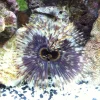 1.webp250.5 KB · Views: 550
1.webp250.5 KB · Views: 550 -
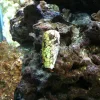 2.webp234.7 KB · Views: 353
2.webp234.7 KB · Views: 353 -
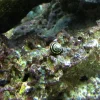 4.webp256.8 KB · Views: 366
4.webp256.8 KB · Views: 366 -
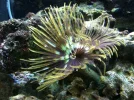 5.webp220 KB · Views: 356
5.webp220 KB · Views: 356 -
 7.webp161.4 KB · Views: 378
7.webp161.4 KB · Views: 378 -
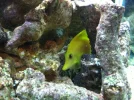 8.webp165.2 KB · Views: 346
8.webp165.2 KB · Views: 346 -
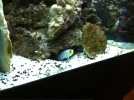 10.webp115.6 KB · Views: 345
10.webp115.6 KB · Views: 345 -
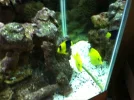 15.webp116.3 KB · Views: 357
15.webp116.3 KB · Views: 357 -
 13.webp183.4 KB · Views: 385
13.webp183.4 KB · Views: 385 -
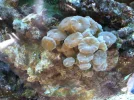 22.webp176.1 KB · Views: 349
22.webp176.1 KB · Views: 349 -
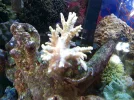 23.webp203.4 KB · Views: 371
23.webp203.4 KB · Views: 371
Last edited by a moderator:
